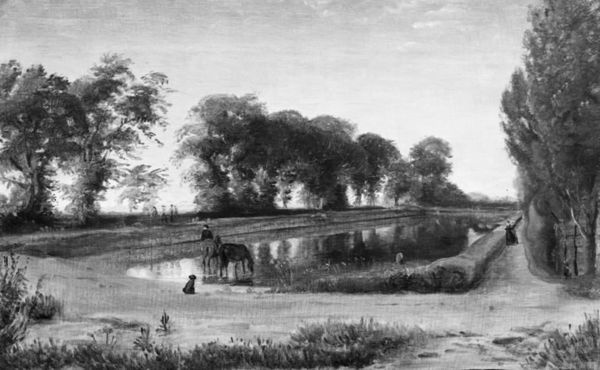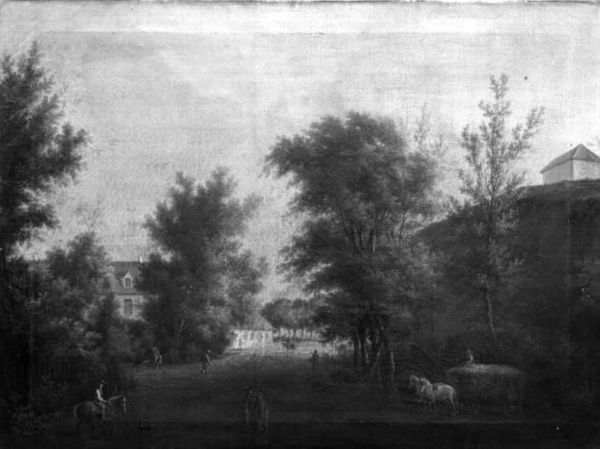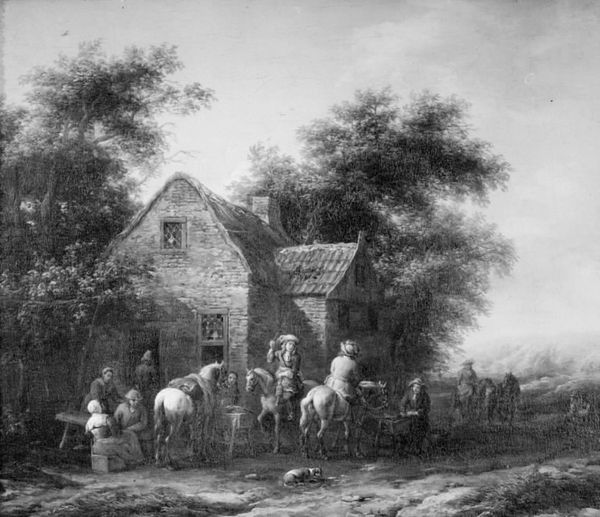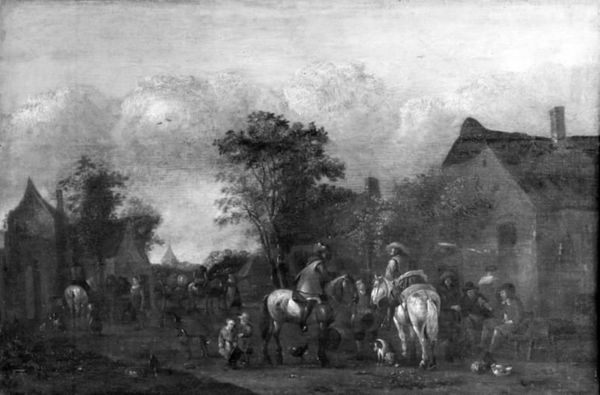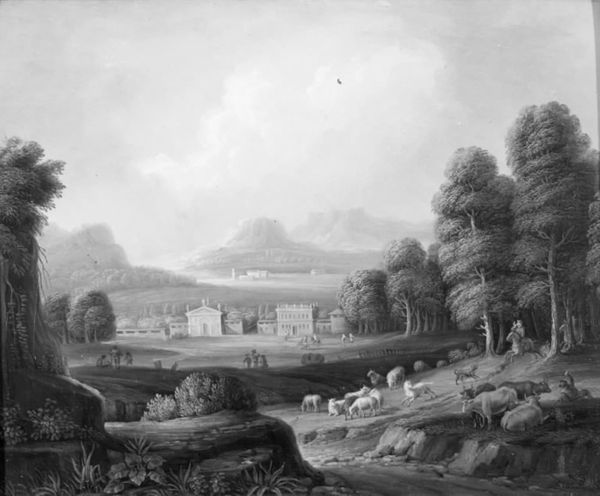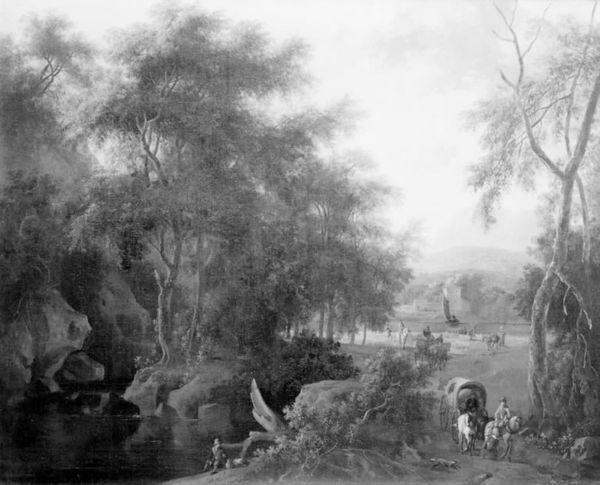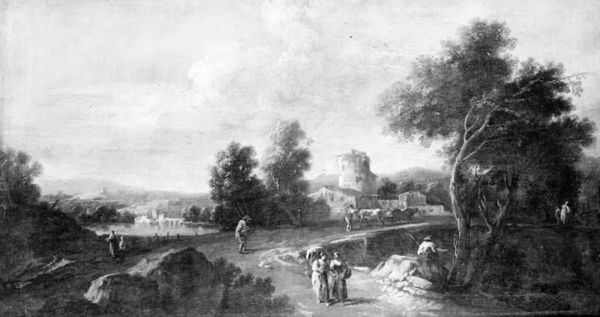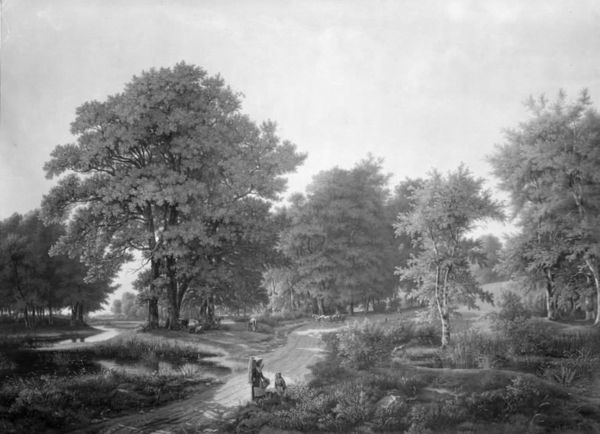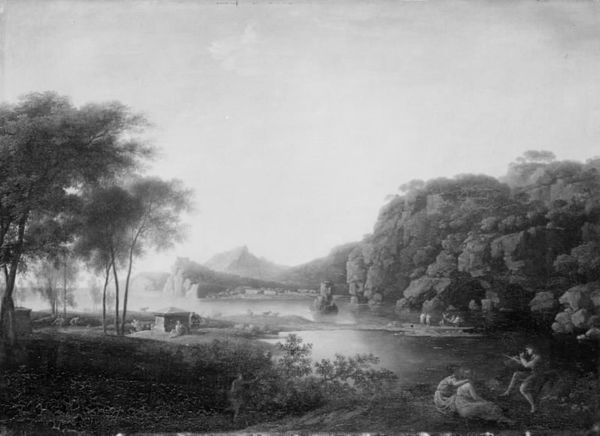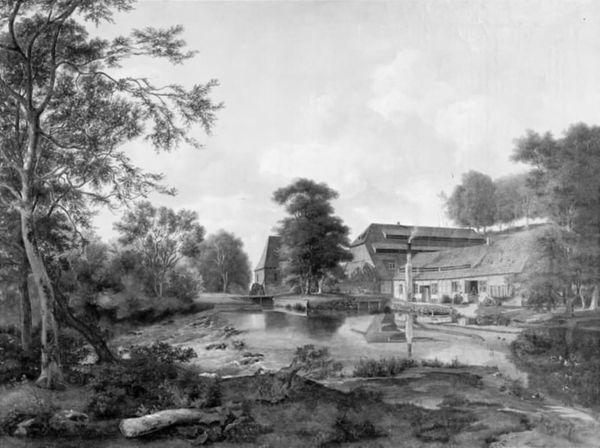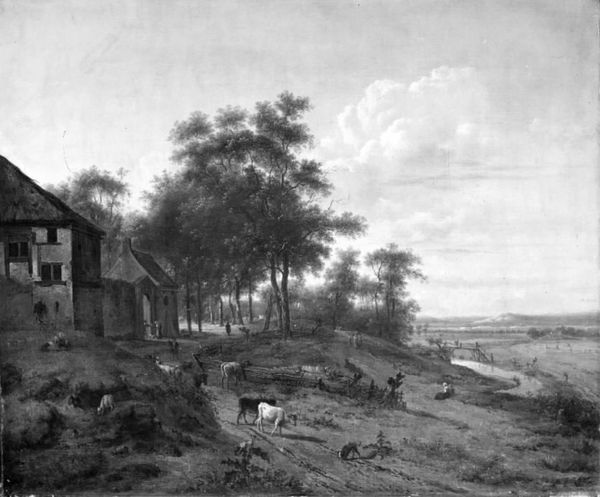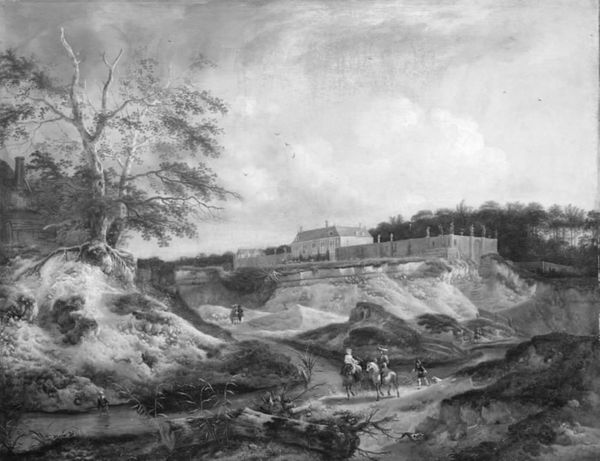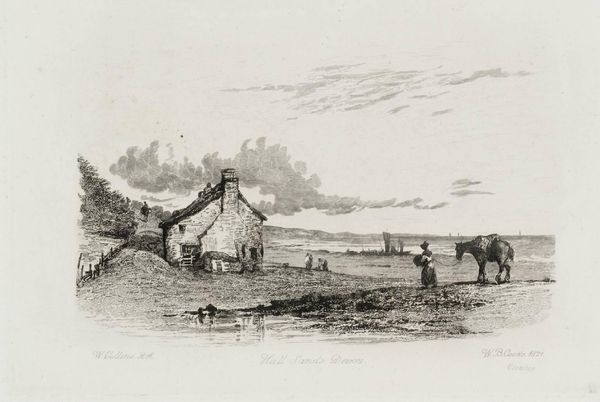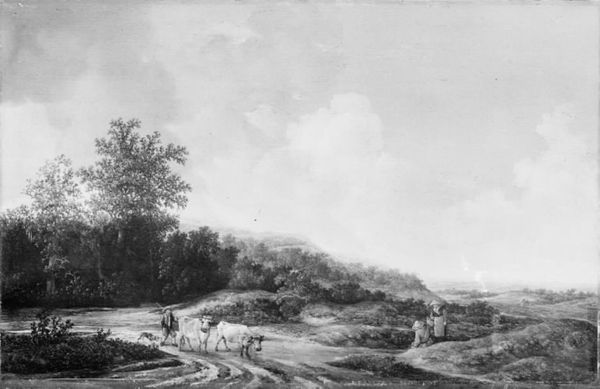
painting, wood
#
dutch-golden-age
#
painting
#
landscape
#
wood
#
genre-painting
#
monochrome
#
monochrome
Dimensions: 35.5 cm (height) x 80.3 cm (width) (Netto), 0 cm (height) x 0 cm (width) x 0 cm (depth) (Brutto)
Editor: This is Pieter Jansz’s "View of the Country House Oversteen," painted sometime between 1618 and 1678, using oil on wood. The monochrome palette gives it a timeless, almost ghostly quality. What sociopolitical currents do you see reflected in this landscape? Curator: This seemingly tranquil scene speaks volumes about the burgeoning Dutch Golden Age. The emphasis on the country house reveals an emerging merchant class consolidating wealth and power, seeking to emulate aristocratic lifestyles through land ownership. How might this artwork serve as both a celebration and a subtle critique of that socioeconomic shift? Editor: So the idyllic landscape isn’t just a pretty picture; it’s also about class and wealth. I hadn't thought about it that way. Does the positioning of the figures have a role? Curator: Precisely. The figures in the foreground – the animals, the walking figure, the implied labor – are essential to this discourse. They quietly emphasize the contrast between the leisure enjoyed within the country house and the activities sustaining that lifestyle. Think about how the land is portrayed, almost like a commodity. Editor: That makes sense. It's a view *of* something, possessed, almost surveyed. A silent power dynamic is being illustrated. What implications does this kind of representation have on contemporary dialogues about ownership and equity? Curator: In our current era, marked by debates on environmental justice and wealth inequality, considering this painting provokes meaningful questions. For whom are these landscapes "made"? How are they sustained, and at what cost to others and to the environment? These images invite us to scrutinize whose stories are being centered, and at whose expense. Editor: It is more complex than I had thought. Thank you for sharing these sociopolitical views! Curator: And thank you for allowing the dialogue to emerge.
Comments
No comments
Be the first to comment and join the conversation on the ultimate creative platform.
